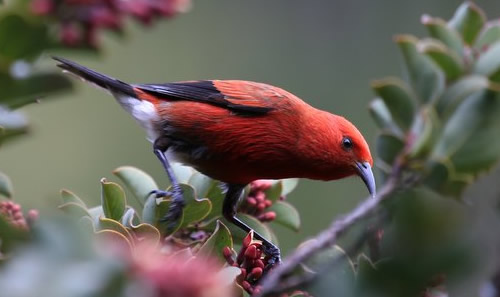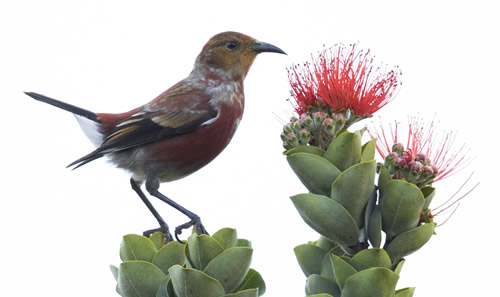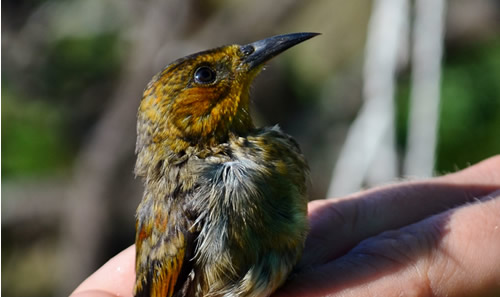'Apapane
Himatione sanguinea
The ‘Apapane is a widespread nectarivorous honeycreeper. They are excellent flyers and often range widely in search of nectar sources in native and non-native forest habitat utilizing native plants like ‘ōhi‘a as well as non-native species like black wattle. ‘Apapane are abundant but are restricted to forested habitats and are dependent on nectar sources. Adults are bright crimson with dark wings and tail and prominent white undertail coverts. The head is usually brighter than the rest of the plumage. Their brush-tipped tongues may protrude, making their bill tips look white. Juveniles are yellow-brown with white undertail coverts and gained the red plumage in the first two years. Like any good pollinator, their faces are often covered in pollen grains giving it a yellowish cast. The now-extinct close cousin, the Laysan Honeycreeper (Himatione fraithii), was very similar in appearance showing more orange plumage overall and dingy undertail feathers.



